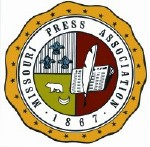Andac-monroe-speech



Contents
Sewing the seeds: Bill Monroe's Feb.4 talk to Midwest Newspaper Summit
Here is text from which Multistate Digital Task Force Director Bill Monroe spoke to the Midwest Newspaper Summit in Des Moines, Iowa, on Thurs., Feb. 4, 2010. The talk outlines the need for action on behalf of the nation's newspapers to collaboratively address control of rights and usage of their content online.
By Bill Monroe
Good morning. And thank you for inviting me here today to tell you about an exciting project that I hope you want to be part of. I want you to know that I’m also here today to get your ideas and comments, so I’ve left plenty of time at the end of this presentation to hear what you have to say.
Now I’ve planned literally hundreds of sessions like this in my career at the INA and I know that our members sometimes complain that the speaker did not know his audience. Our members sometimes complain that the speaker’s message was “just for the dailies” or just for the weeklies”.
I want to make it clear that I know something about my audience today and I believe what I have to say will affect every newspaper in this room in some way sooner or later…and it may be sooner rather than later.
Remembering Econ 101 -- Never more demand for information
It’s been a very long time since I sat in a large college lecture hall and endured that required course called Econ 101. But I do remember learning about the law of supply and demand. It strikes me that in the history of the planet there has never been more demand for information. That bodes well for newspapers since they have long been the medium that has provided more information to more consumers than any other. However, there also has never been a greater supply of information than now...thanks to the Internet.
"The challenge for newspapers is to continue to position themselves in the information market as the primary provider of reliable, trusted information."
I also know that no newspaper in any state…daily or weekly…group or privately owned…has found the secret formula for competing for revenue electronically even though most of the owners of our newspapers understand that more of their cherished readers every day are getting their news online.
Dailies and some weeklies know this because they’ve seen their paid circulation decrease even as their readership has increased. Some of this decline has been self-inflicted as readers have gone to the newspapers’ web sites to read the news rather than paying for it. Newspapers offering free content on their websites are in a catch 22 situation. They know they have to have more and more eyeballs and click-throughs to attract online advertisers and one way to do this is to offer compelling local news coverage free of charge. But the more they go in this direction, the more they see long-time loyal subscribers deciding they no longer must pay for the news. These papers are looking for answers.
Some papers don't perceive the threat
Even more problematic are small daily or weekly newspapers that aren’t looking for answers because they don’t think the Internet is a threat to their future since they have penetration numbers that larger newspapers envy. In both of our states, there are weeklies that reach over 90 percent of the households in their markets. Why would these publishers want to start developing a new business plan?
Well, maybe they should be thinking about a different way of doing business because they could save a great deal of money on printing and postage costs which are only going to increase markedly in the future. Or maybe they should consider a new business plan because rouge competitors are already setting up electronic competition that these newspapers may not even know about.
"When you go home, go to this URL and see if this competitor, and others like it, is moving in on your newspaper’s turf: http://www.americantowns.com . . . . "
When you go home, go to this URL and see if this competitor, and others like it, is moving in on your newspaper’s turf: http://www.americantowns.com . Once there, find your community. You’ll see a website aimed right at your readers. Even though this website is not presently providing the breadth and depth of coverage you provide, it is establishing a framework to chip away at the finite advertising budgets of your local advertisers and it could succeed…but only if you let it.
Remembering the music industry
In the past, we’ve watched as the music industry cried foul when people were putting songs on the Internet for other people to download and enjoy for free. The music industry objected to that practice and those objections were valid. The industry had paid for the creation, performance and distribution of the music and was powerless to keep users from ripping it off from Internet websites like Napster and others. A few court cases later, and following the invention of new technology like iTunes, the problem was well on its way to being solved. Now those who created the content are getting a share of the revenue from online purchases. They have no manufacturing or distribution expenses to pay so they can afford to accept less and still make a profit.
Does any of this sound familiar?
While the Internet has created huge business opportunities it has also destroyed a portion of the traditional monetary underpinnings newspapers have depended upon to fund the gathering of information. Digital files created and owned by a newspaper can be placed so rapidly into the public domain that the ability to derive full value from the product is directly diminished. Products and services are created daily which seek to take that content for their own commercial purposes, paying the source newspaper pennies, if anything at all.
The newspaper industry now faces the same challenges that once faced the music industry. Newspapers hire reporters, pay for expensive reportage, pay for print and online distribution of the news content they have created only to see that same content used by people they’ve never met. People who run websites that generate subscriber and/or ad revenues that go only to the poachers of this expensive and compelling newspaper content.
There’s a growing outrage among publishers who have said they’re mad as hell and aren’t going to take it anymore.
Outrage spawns multistate digital task force
It was that publisher frustration that has spawned a new multi-state publisher grass-roots effort to help newspapers monetize the Internet by collecting, digitizing and marketing newspaper content. On Nov. 20, 35 publishers and representatives of state, regional and nation newspaper organizations met at a meeting in Kansas City hosted by the Kansas City Star to discuss steps to take to address this problem. For several months prior to that meeting, a Multi-State Digital Task Force made up of publishers from Kansas, Missouri and Iowa had been discussing this idea. The Nov. 20 Task Force meeting was a facilitated discussion where all other newspaper associations were invited to attend, observe and weigh in with their thoughts.
The Task Force concluded that it is imperative that publishers discuss forming a new company “that collects, stores, digitizes, protects and markets newspaper content” . . . for research, historical and commercial purposes.
The Task Force has concluded that it is imperative that publishers begin to discuss the possibility of forming a new, for-profit company “that collects, stores, digitizes, protects and markets newspaper content”. The mission of this corporation would be to provide news organizations with a means to digitize and archive their content for research, historical and commercial purposes. In short, the Task Force believes that newspapers can leverage their collective power to create a substantial competitive advantage in the information marketplace.
People are increasingly moving their lives on-line, and the newspaper industry is still searching for a viable model to monetize the distribution of content in an electronic world. Demand is not the problem – people want news. The problem is capturing sufficient value from that demand.
The Task Force thinks the state press associations are the logical organizations to move this effort forward since almost every newspaper in America belongs to its state association and all state associations are controlled by the newspapers they serve. Integration of content through state press associations could lead to substantial benefits for all involved parties.
The primary function of the new company would be to create a central collection point for the receipt of royalties derived from reused content. The technology now exists to allow the tracking of all content posted on a newspaper website but used on a content pirate’s website without the permission of the newspaper and without the paying of royalties. The new company would create a way for anyone wanting to reuse newspaper content to do so legally by paying for it…or facing possible legal action. The company also would create a system to track and distribute royalties to all participating newspapers.
But the task force believes there would be many other compelling reasons to create this company. Once the technology to accomplish our primary mission is in place, many other opportunities are created to help newspapers.
---How many people here think public notice advertising in newspapers is at risk? This new company could provide state press associations with ability to upload public notices to statewide public notice websites within days rather than weeks to protect the future of these notices in newspapers. Every state is now facing the threat of having public notices moved from newspapers to government-controlled websites. In legislative battle after battle around the nation, it has been shown that states with comprehensive, up-to-date public notice websites have successfully used those websites to defeat bad public notice legislation. The problem with most state press association public notice websites is two-fold. First, in most cases, newspapers are asked to regularly upload their public notices to the association website. Not all papers can do this and… Second, the uploads that are done are erratic resulting in websites with old, incomplete content…hardly a deterrent to bad legislation. The technology exists today to have 100% of the notices of all newspapers in a state posted within 48-72 hours after publication without any work on the part of any newspaper.
---How many here would like to see payments from your state’s ad service paid more quickly? Another potential benefit of this company would be the ability of press association ad services to obtain electronic tear sheets within a few days of publication to make our ad services more viable and speed payment to newspapers. State press association ad services have always faced significant problems in their efforts to send publishers timely payment for advertising they’ve sold. Most states pay their member papers once they’ve been paid by the advertiser. Billing can’t take place until all tearsheets have been located and collected for billing. Far too often, ads run on days other than the day on the insertion order, or they do not run at all. This causes an unnecessary billing delay and an unneeded expenditure of association dollars for labor and phone calls to track down the ad and obtain the missing tear sheets for billing purposes. Other states have agreements with their members to pre-pay for the ads they’ve sold before they collect from the advertiser. In addition to the problems I’ve previously referenced, these states either have to spend association members’ money on operating loan interest expense or commit the use of other association funds to these payments rather than allowing them to earn interest. The technology currently exists to generate electronic tear sheets within a few days after publication. This would greatly speed up the billing process and, in turn, allow state associations to send members their money sooner.
---Still another benefit would be the ability of newspapers to have the option to create low-cost, word-searchable morgues and archives. Think of this service as a Google without all the false leads to sources that contain unedited and inaccurate information. This service would allow reporters to search their own archives and the archives of other participating newspapers to get information on subjects those papers have written about in the past. But unlike Google, all of this information would have been produced by newspapers that have taken great care to make sure it is accurate and not libelous.
We are now in the process of developing a business plan to see how such a company would operate. While details are yet to be developed, at this point the consensus is that the corporation would sell stock to news organizations, associations and individuals who have an interest in helping our industry to solve the problem of content control.
The critical operating principles of this corporation would include: ---Respect for copyright laws and aggressive pursuit of violators ---Mutually beneficial royalties and profit sharing ---Historic preservation ---Efficient and effective newspaper participation ---Easy customer user access and ---Scalability to be able to help newspapers of all sizes.
The market for the re-sale of newspaper information would include… 1. Newspapers-In a day of smaller news staffs and a push to localize all information, an archive of both weekly and daily newspapers would be valuable. The archive should also contain past issues, giving any reporter the ability to quickly research any subject. 2. Clipping services 3. Advertising tear sheets 4. Individual stories by subject 5. Genealogist and research historians 6. On-line news aggregators
I retired at the end of 2009 after serving as executive director of the Iowa Newspaper Association for 29 years. I’ve been hired as an independent contractor (at 1/10th of my former salary) to facilitate development of a business plan for presentation to the Task Force this spring. You might wonder why I would want to take on a project like this with a 90% pay cut. I’m convinced that publishers can and must figure out a way to work together to make sure they are fairly compensated for the content they produce. Over the past three decades I’ve seen countless examples of the power of newspapers working together for the common good. I feel honored to have been asked by the Task Force and my press association manager peers to take this on. My compensation level was my idea. I’m thrilled just to be just a part of this.
In the coming months, I will be talking to groups like this one explain our project and to ask for your ideas on how this should work. I’ll also be talking to interested vendors who have already invented technology that addresses part of the solution we’re trying to develop. There’s no use re-inventing the wheel if a qualified vendor partner can help us solve this problem.
For example…
---Associated Press has a plan for protecting online content. They call it Protect, Point, Pay. In simple terms, AP has developed a way to enable any newspaper to track where every online piece of content goes and who is using it without authorization, collect royalties for the use of the content, then pay newspapers royalties. Two representatives from AP were at the November Task Force meeting in Kansas City and AP has expressed an interest in being a part of the solution we’re searching for. This year, AP will launch a pilot project with non-AP weeklies in Iowa.
---Other states have been working on a variety of ways to skin this cat. If it makes sense to incorporate some of their better ideas into a group solution, we will do that.
---A fellow at the University of Missouri’s Reynolds Journalism Institute has expressed great interested in working with the Task Force to develop a solution utilizing a start-up company he has founded.
---GeoTel, a company with a long history of operating clipping services in 14 states, and now offering the Cadillac public notice website operation for state press associations, is keenly interested in being a partner in this effort if the Task Force agrees.
And there are others.
But the key to success will be control of this company by newspapers who will have controlling membership on the board of directors. In that sense, this company is quite similar to advertising services operated by state press associations. In every state press association ad service, association members set the policies, determine the percentage of sales income to be sent to newspaper and control the budgets of these services. The same would be the case for this company.
How will this effort be funded? That will be determined by the board of directors of the new corporation. For now, several individuals and state press associations have contributed money to the project to enable us to get to the point where we’ve developed a business plan.
After a full day of facilitated discussions at the November Task Force meeting in Kansas City, the question of funding the creation of the business plan was put on the table. One publisher said she felt so strongly about the effort that she would contribute $5,000 of her own money. A second individual said he would do the same. Other $5,000 pledges came immediately from the Iowa Newspaper Foundation, the Missouri Press Association and the Kansas Press Association. That initial $25,000 was raised in less than two minutes. Since then, other press associations have indicated they want to help. The Minnesota Press Association made a $1,000 contribution in January after I talked with their board in December. We have no present plans to do a formal fund-raising campaign until we develop a business plan. But in the spirit of full disclosure, it might interest you to know that it’s the intention of the Task Force to convert every dollar of contributions received before that formal campaign is launched to $10 worth of stock in the new corporation should the business plan be adopted and the new corporation formed.
What are the odds we’ll succeed?
I’m no gambler, but I do know we have some major obstacles ahead of us. There are plenty of people who say we’ll fail. Many newspapers are unaware of the present and future threat to their franchise posed by poachers of their print and online copy. And even if we all agreed that creating a publisher-controlled company to deal with this challenge is essential, the politics and mechanics of making it happen would be daunting to say the least.
But the members of the Task Force and the individuals and states who have contributed funds without even being asked to do so believe it is the mission of state press associations to TRY to solve the problem rather than merely sitting on the sidelines and watching content pirates profit from the unauthorized use of our members’ content.
The thing we must always remember is that content is the newspapers’ trump card. Nobody can gather complex information and arrange it in a way that it can be easily understood by the average seventh grader the way we can. That’s a key competitive advantage we have that no other medium can touch.
Anyone can devise a way to deliver information electronically…Just look at the overwhelming number of players on the Internet.
But very few information sources can guarantee readers that the information they provide is quality information. That is, it has been gathered by reporters who know how to ferret out information and ask pertinent questions to the right people to interpret the information.
It is information that has been fact-checked and edited.
It is information that will soon be gathered and then disseminated to individuals…not households…in a form that meets the needs of each reader in a unique manner.
What’s missing in today’s marketplace is a way to enable newspapers to protect that content and to profit when others reuse it. In my opinion, that vacuum will be filled in the near future. Some inventive outsider will either fill it or it will be filled by publishers who have realized that they need to work together to solve this problem. And while it won’t be an easy problem to solve, the alternative of allowing a non-newspaper entity to dictate policy and financial terms to newspaper is simply not acceptable.
I’d now like to open this up to hear your questions and comments. I can promise you that your input will be taken seriously and reported to the Task force.
Who has the first question?

